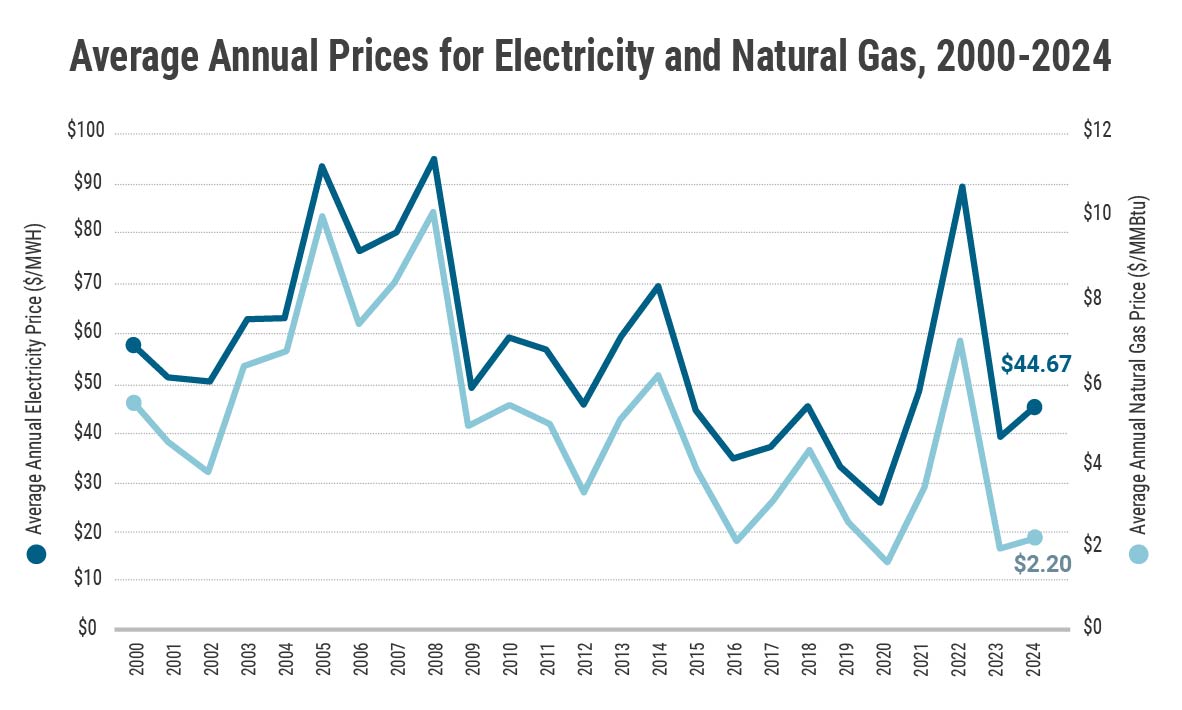Wholesale vs. Retail Electricity Costs

With the recent focus of rising energy costs in the news, it’s important to understand the distinction between the wholesale cost for electricity supply and retail electricity charges on the consumer bill.
Noting this difference also helps explain how energy markets function; how wholesale supply prices are determined for end-use consumers; and the difference between wholesale electricity supply and the costs of delivering electricity to consumers.
Wholesale Electricity Pricing
Wholesale electricity prices are determined through an open, competitive marketplace, where electricity is bought and sold between generators and utilities before reaching the end-use consumer.
The wholesale price of electricity on the electric power grid reflects the real-time cost for supplying electricity. Demand for electricity contributes to the cost of supplying electricity. Electricity demand is usually highest in the afternoon and early evening (peak hours), so costs to provide electricity are usually higher at these times.
Most consumers pay prices based on the seasonal average cost of providing electricity, so they do not experience these daily price fluctuations.
In regions like New York, the wholesale electricity markets are centrally administered by regional transmission organizations (RTO) or independent system operators (ISO). All ISOs and RTOs operate markets that trade the electricity needed to meet projected and real-time demand. ISOs and RTOs cover about two-thirds of all consumers in the Unites States.
In New York, the wholesale electricity markets are administered by the New York Independent System Operator (NYISO). Every minute, every day, wholesale electricity markets provide the least-cost mix of electricity supply necessary to meet consumer demand and keep the grid reliable.
The rules under which the markets operate are set through an open and transparent governance process. State regulators play an important role in this rulemaking process, and all wholesale market rules are subject to oversight by federal regulators.
The wholesale price of electricity reflects several external factors:
- Fuel Costs: The cost of fuels used in electricity generation, such as natural gas, directly impacts wholesale electricity prices. An increase in fuel costs can lead to higher wholesale electricity prices, as experienced during the 2025 winter heating season.
- Supply and Demand Dynamics: Wholesale prices are sensitive to changes in electricity supply and demand. For instance, during periods of high demand or limited supply, prices can surge. Conversely, lower demand can lead to lower prices.
- Transmission Constraints: Limitations in the transmission network can cause price variations across different locations, especially during times of high consumer demand.

Retail Electricity Pricing
Retail prices are the rates charged to end-use consumers by the utility delivering electricity to one’s business or home. These rates are set at a level to recover the utilities’ costs of doing business, including the cost to purchase or generate the electricity to serve consumers, the cost of delivering the power, and administrative costs.
Retail electricity rates are approved by the New York State Public Service Commission and encompass several components beyond the wholesale cost of electricity:
- Supply Charges: In New York, each utility procures electricity to serve consumers through a combination of purchases from the wholesale electricity markets administered by the NYISO and direct purchases from suppliers. How each utility procures electricity supply varies and is subject to oversight by the New York Public Service Commission.
- Transmission and Distribution Costs: Expenses related to delivering electricity from power plants to consumers, including maintenance of power lines and supporting equipment and infrastructure.
- Administrative and Operational Costs: Costs associated with billing, customer service, and other operational activities of the utility or retail provider.
- Taxes and Regulatory Fees: Government-imposed taxes and fees that support state-sponsored energy programs, resource development, and other regulatory requirements.
- Profit Margins: Utilities include a profit margin to cover business risks, investment costs for new infrastructure and costs for maintaining aging infrastructure.
The power system in New York, and in many parts of the country, is experiencing an unprecedented transition. Just as residents and businesses across New York use increasing amounts of renewable electricity to power their lives and livelihoods, the expectation for reliable electricity also remains. Investments in upgrading and modernizing the energy grid, while necessary for reliability and efficiency, can also lead to higher costs for consumers. Disruptions in the supply chain for goods and material to build out and strengthen the grid and general inflation, including the cost of labor, goods and services, contribute to rising energy costs.
Being aware of factors like seasonal demand, grid maintenance and inflationary drivers, can help consumers anticipate potential price changes. Knowing the components of the electric bill and the drivers behind cost increases, like fuel prices, infrastructure investments, and demand fluctuations, can help consumers make informed choices about their energy consumption.
